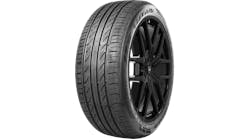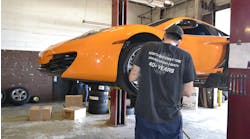Movistar Yamaha MotoGP’s Jorge Lorenzo was in complete control during last Sunday’s Czech Republic Grand Prix, the Spaniard winning ahead of Marc Marquez and Valentino Rossi.
The weekend at Brno was characterized by high ambient and track temperatures, with things cooling off slightly on Sunday resulting in a peak track temperature of 42°C during the race. During Qualifying Practice 2 on Saturday, Lorenzo set a new Brno Circuit Best Lap record of 1’54.989 – beating Cal Crutchlow’s old record by half a second.
Q&A with Masao Azuma – Chief Engineer, Bridgestone Motorcycle Tire Development Department
Many riders mentioned how poor the grip level was at Brno this year, particularly in hot conditions. How did Bridgestone help the riders manage track conditions which at times were quite challenging?
“Brno, along with Sepang, is one of the circuits on the MotoGP calendar where we perhaps notice a greater decrease in track conditions each year compared to other circuits. This year it seems the grip from the tarmac was a bit lower, and there were more bumps in some corners. We revised our tire allocation at Brno this year to give the riders options that would deal better with the low grip tarmac and the many changes of direction and elevation at this track. Both the medium and hard compound rear slicks for Brno were different to what was offered last year and utilized softer compounds to give riders better cornering performance and drive grip. Also, the hard compound front slick at Brno was different to what was offered last year at this track and provided better cornering performance compared to the previous hard front slick. These new options at Brno made it easier to manage the challenging track conditions, although it took a lot of tire testing during the practice sessions for each rider to find the tire combination that worked best for them.”
We’ve seen many lap and overall race records set during races this year, but at Brno neither record was broken. Was this down to the revised tire allocation you provided this year or some other factors?
“With our new rear tire allocation we could see that although over one lap the riders could set very quick times – in qualifying the top five riders were under the previous Brno Circuit Best Lap record – over race distance the pace was a little slower. The main reason for this was that compared to last year’s race, track temperatures this year were approximately 15°C higher. As we could see in the practice sessions, the Brno track surface loses even more grip when it gets too warm and although this wasn’t a big issue during qualifying over one flying lap, over long distance this did affect tire performance. With less grip on offer, the riders said that towards the end of the race they had to work hard to limit the amount of spinning from the rear tire. So the normal tire degradation in the final stages of the race combined with the poor grip of the tarmac made it difficult for riders to break the overall race time record. We can certainly say that this year’s Czech Republic Grand Prix experienced the most severe track conditions in the last couple of years in terms of track temperatures and surface grip conditions.”
Given that the Brno tarmac was in a worse condition this year, how was it possible that the riders were so quick in qualifying?
“As the medium compound rear slick was softer in composition than the medium rear offered at Brno last year, it had the potential to be quicker over a single lap. If you compare track temperatures between last year’s race and this year, the difference was around 15°C but the difference in track temperature for QP2 was less, only five degrees more. Also, with less laps to ride in qualifying, there is less chance to overheat the rear tire through prolonged spinning so that is why Jorge could cut half a second off the lap record and four other riders could set times quicker than the record, despite the lower grip level this year.”


